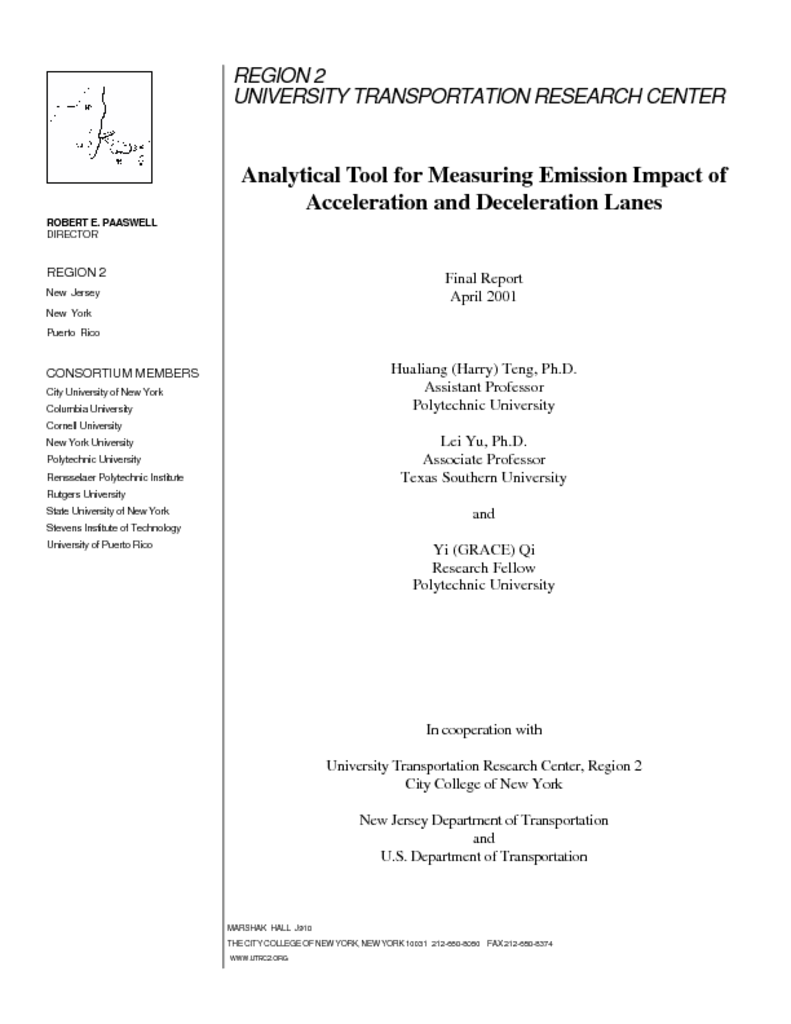<p>Air quality has become one of the important factors to be considered in making transportation improvement decisions. Thus, tools are expected to help such decision-makings. On the other hand, MOBILE5 model, which has been widely used in evaluating air quality improvement, become helpless when the transportation improvements are sensitive to factors such as acceleration/deceleration, grade, etc. which are not modeled in MOBILE5 model. For example, improvements can be made to reduce the grade of a ramp, thus reduce high acceleration and deceleration. Intuitively, high acceleration would induce high emissions. MOBILE5 model, however, doesn?t model the impact of acceleration/deceleration on emissions, thus cannot help the relevant decision-makings. Therefore, the objective of this study is to develop emission models to incorporate into acceleration/deceleration. In this study, nonlinear regression models were developed to take into account factors of acceleration or deceleration, which are not considered in MOBILE5 model. To fully capture the dynamics of acceleration/deceleration, not only the acceleration or deceleration of the current time period is included in the independent variables, but also those of previous time periods. In addition, the duration that acceleration or deceleration has been exercised is also included as independent variables. The factor of grade is considered in the models by using the grade to adjust the values of acceleration or deceleration. Besides these independent variables, variables representing traction power are also introduced into the models because they directly determine the amount of emissions to be produced by a vehicle. With this modeling approach, the validation results show that the emission model developed in this study can produce a close match to the raw emissions data in both microscopic and macroscopic levels</p>




